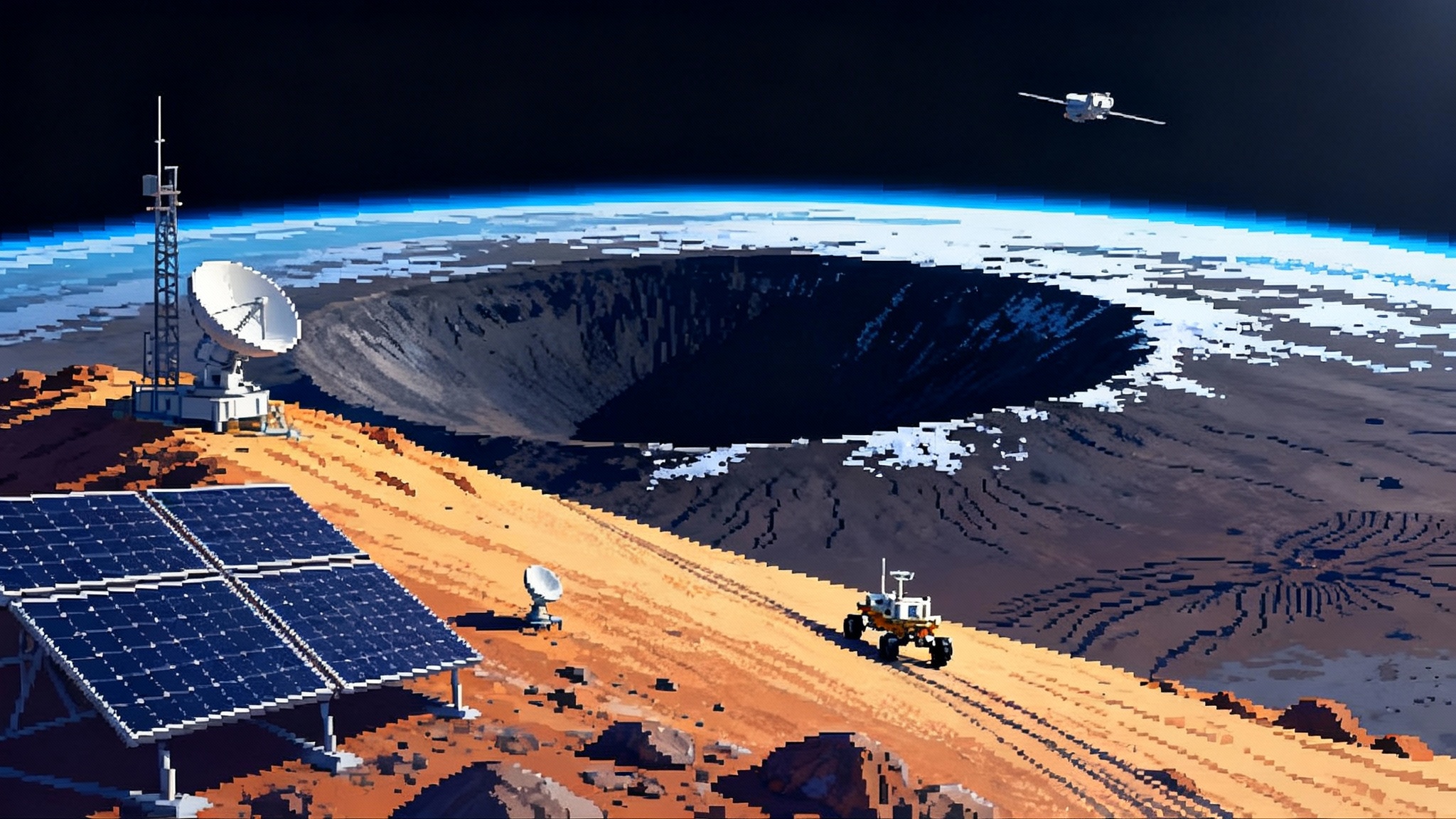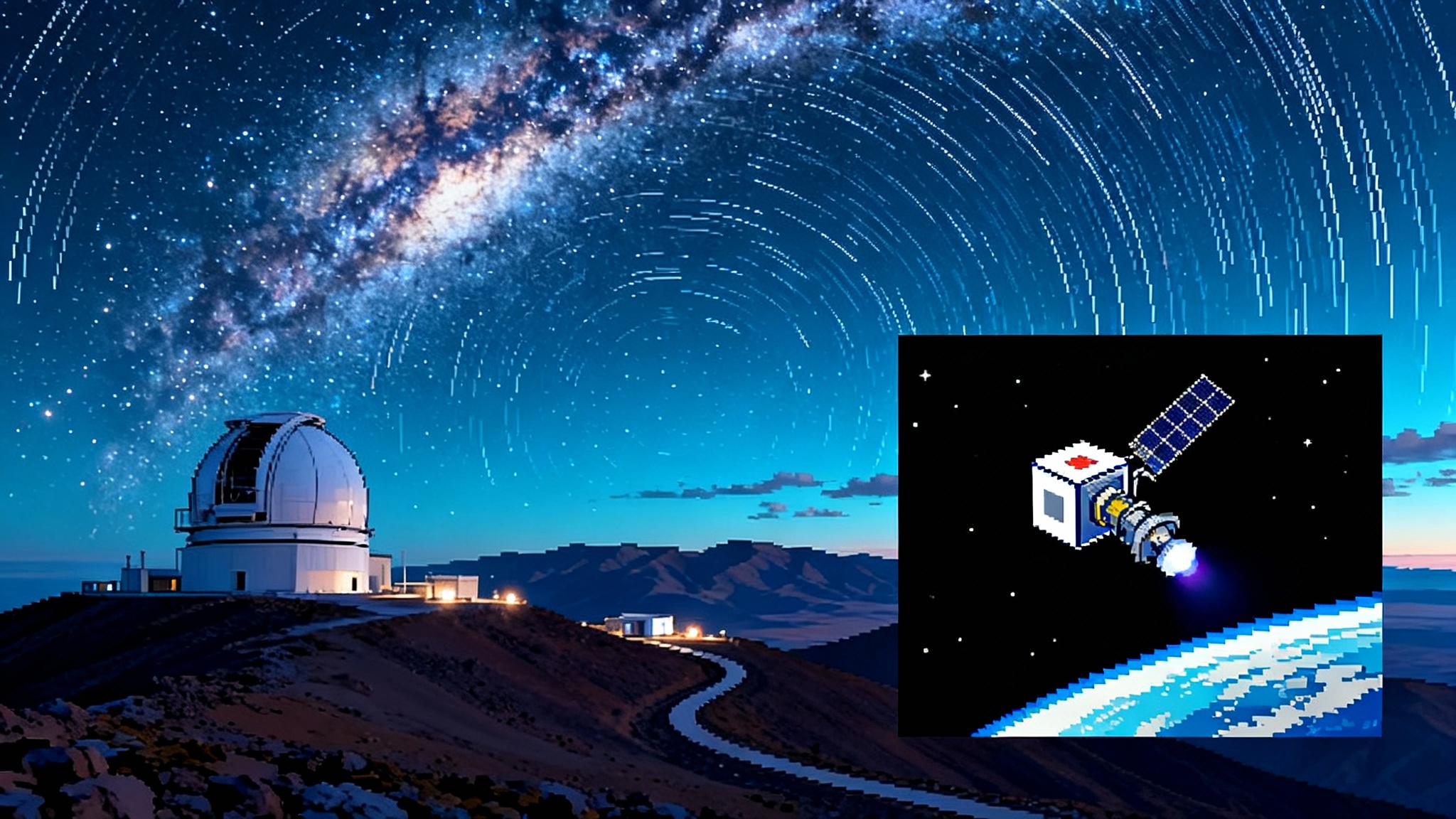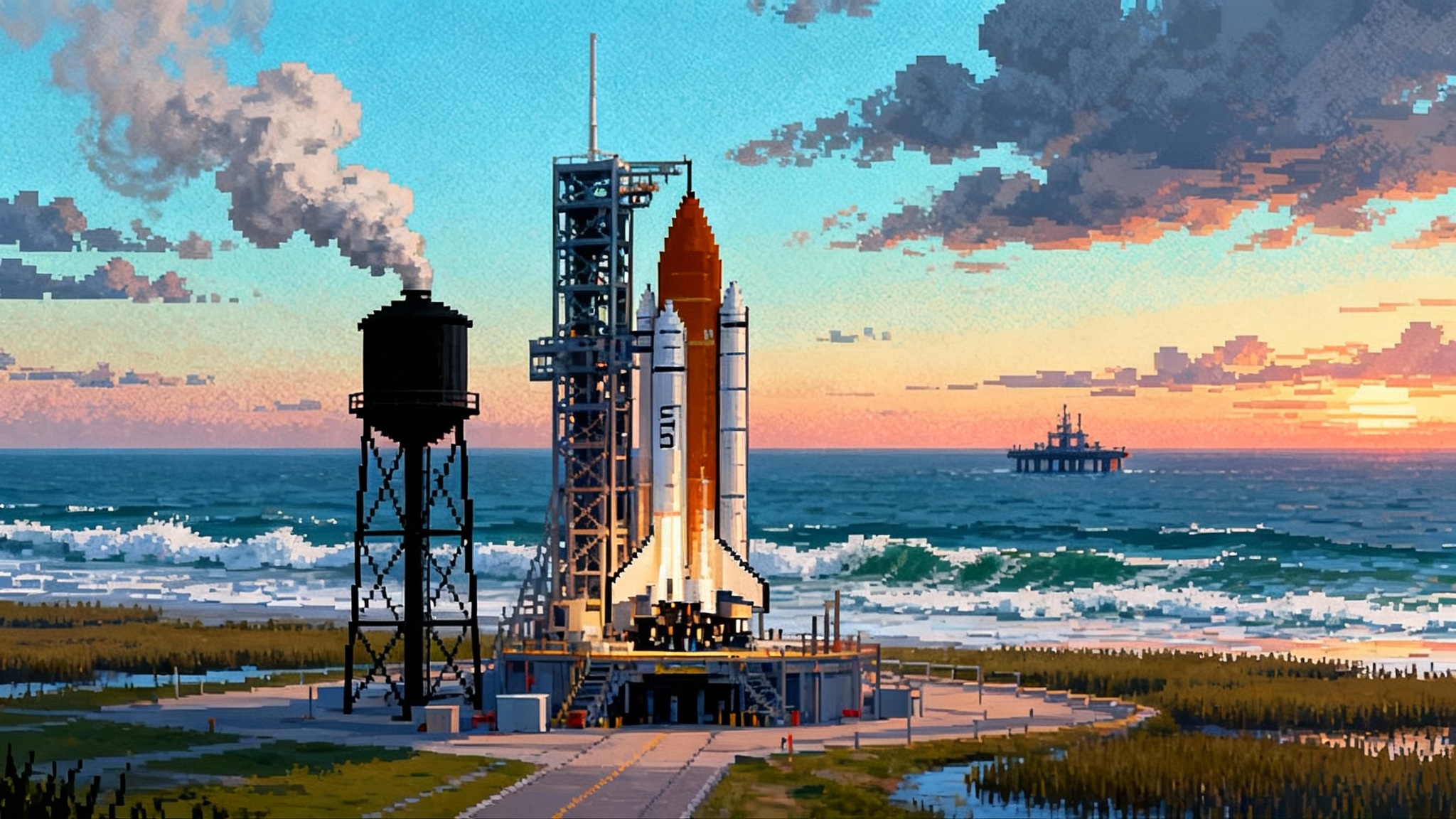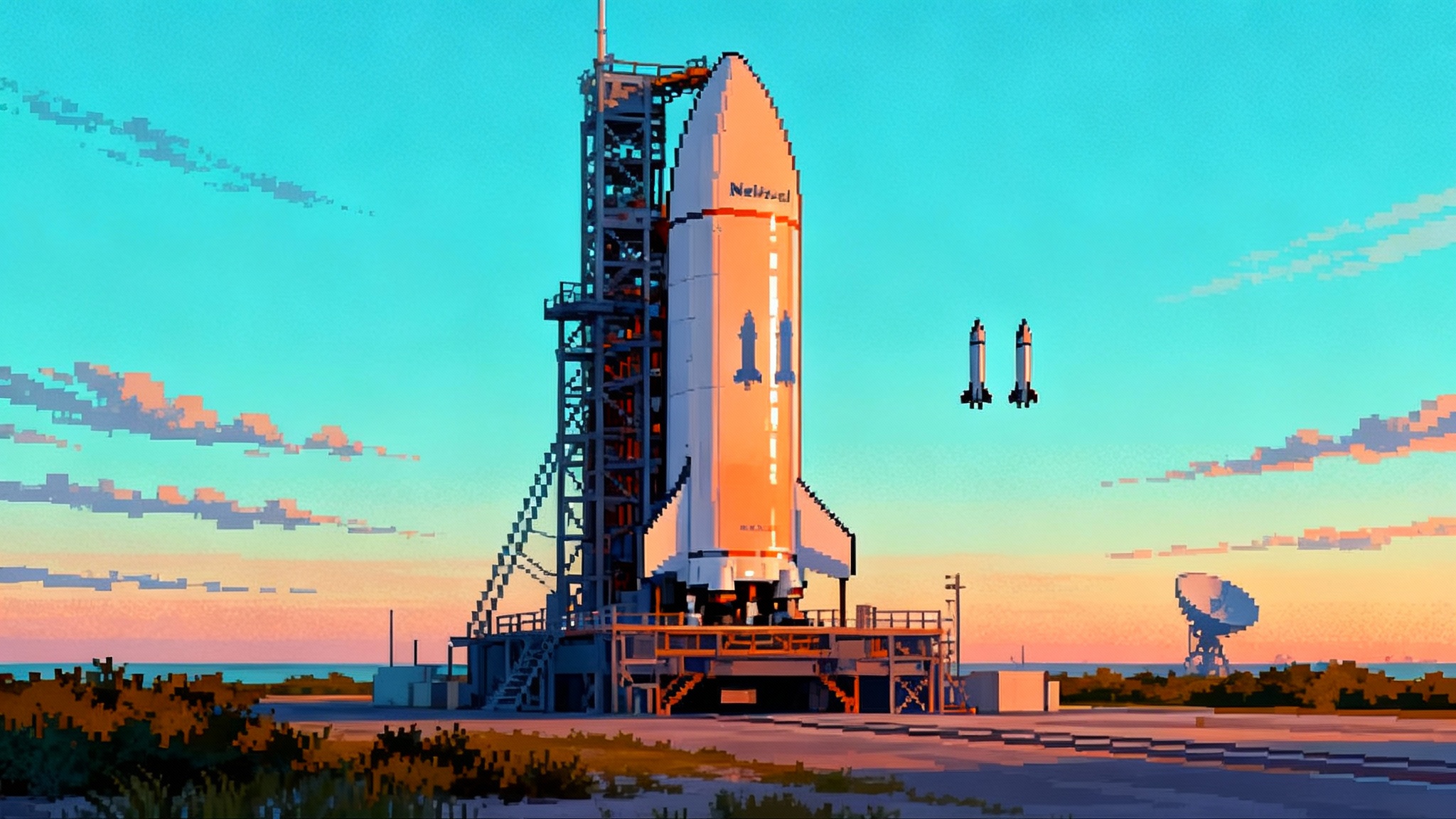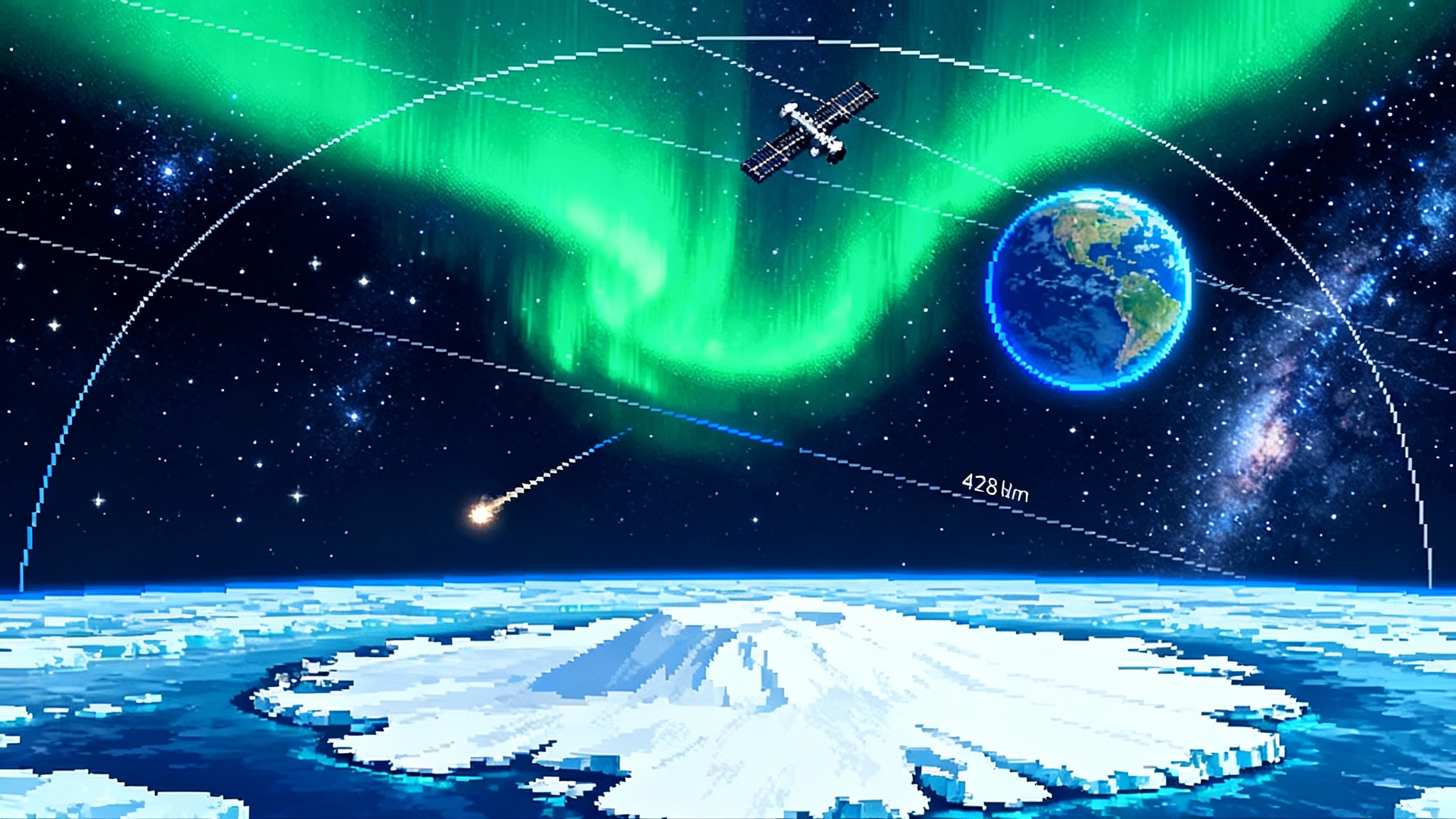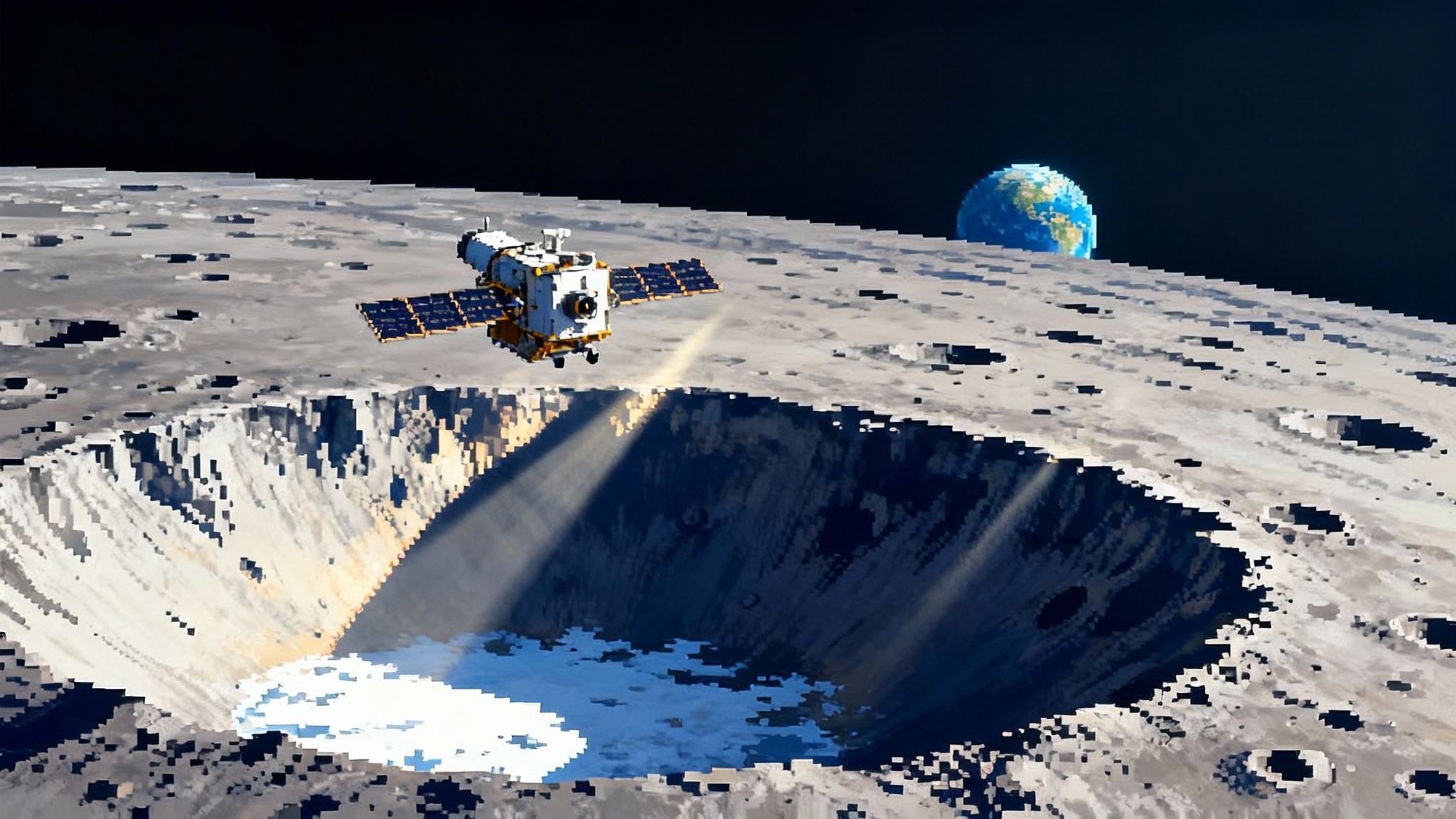The Moon’s First LTE Switch-On Starts a Space Internet
A 25-minute activation of Nokia Bell Labs’ LTE box on Intuitive Machines’ IM-2 proved that standards-based cellular can survive launch, landing, and lunar vacuum. Here is how that small spark can scale into an interoperable lunar internet for rovers, hoppers, and ISRU.
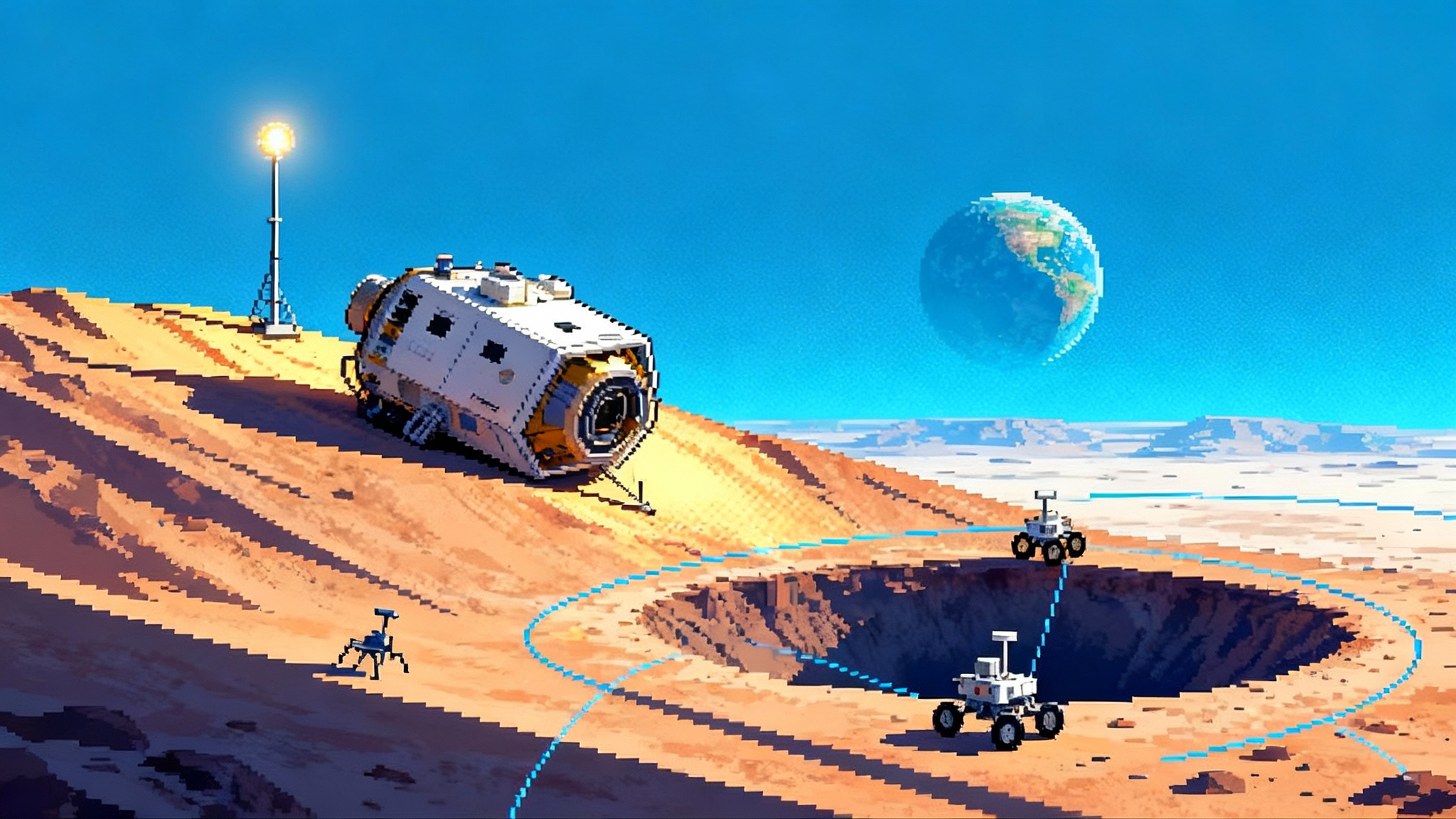
A 25-minute window that changed lunar networking
On March 10, 2025, Nokia Bell Labs disclosed that its Lunar Surface Communications System briefly powered up on Intuitive Machines’ IM-2 Athena lander, exchanged operational data with Earth, and then went dark as the sidelined lander bled power. The team could not complete a full voice call, but the short activation showed that a standards-based Long Term Evolution cellular system can survive launch, landing, and lunar vacuum, and can be commanded and monitored from mission control. That modest proof is the moment standards stepped onto the regolith. It is the difference between a one-off radio and a platform. Nokia’s post-landing update details the activation and the power constraints.
IM-2 did not go as planned. Athena touched down near the south polar region, tipped, and its solar arrays could not catch enough light. Surface operations were compressed into hours rather than days. Still, inside that narrow window, a commercial off-the-shelf cellular technology stack, ruggedized for space, did what it was built to do: boot, authenticate, and pass data. The lesson is not that a call was missed. The lesson is that the Moon’s first cell site powered on.
Why take LTE and 5G to the Moon at all?
For decades, lunar payloads relied on bespoke radios. Each mission brought its own link layer, frequencies, and protocols. That works when one lander talks to one Earth dish. It does not scale when you want a busy worksite where multiple robots and instruments crisscross a crater rim, hand off data, and share scarce power.
Long Term Evolution and, soon, Fifth Generation cellular bring three concrete advantages:
- Interoperability by design. Cellular standards come with device identity, authentication, quality of service classes, and handover behaviors. If you can agree on a profile, a new rover can join a lunar network the way a new phone joins an enterprise network.
- Efficient use of power and spectrum. A single base station can schedule dozens of devices with predictable duty cycles, rather than a tangle of one-off radios talking over each other. On the Moon, every watt you do not waste is another soil sample analyzed or meter drilled.
- A path to scale. Standards evolve. You can start with a compact Long Term Evolution “network in a box” on a lander and extend to Fifth Generation cellular with time-sensitive networking features when you need them. The physical layer and the device ecosystem already exist.
Think of LTE on the Moon as replacing a box of incompatible walkie-talkies with a small, private cell tower that any compliant rover, hopper, drill, or camera can use. The tower schedules the chatter. The robots do their jobs.
What standards-based looks like in lunar dust
Standards on paper are not enough. The Moon adds vacuum, stark temperature swings, radiation, and abrasive dust. Here is what a lunar cellular stack needs to handle and how the IM-2 architecture begins to answer it.
- The base station: a ruggedized eNodeB inside the lander. Nokia Bell Labs flew a “network in a box” that packages baseband, radio, and management software in a thermally managed enclosure hard-mounted to Athena. This is the cell site and local scheduler.
- The user devices: rover and hopper modems. Intuitive Machines’ Micro-Nova hopper and Lunar Outpost’s MAPP rover were slated to connect as user equipment. When mobility resumes on later missions, those radios will give us the first true cell handovers on another world.
- The local area. On the surface, links are short and direct. No atmosphere means no rain fade. Terrain and dust plumes are the challenges. Expect conservative modulation and coding, antenna diversity, and careful placement on booms or masts above the dust layer.
- The backhaul. The base station is local. Lander-to-Earth is still done by space-proven S-band, X-band, or Ka-band radios. The trick is translation: encapsulate instrument and rover data from the Long Term Evolution network into a transport suited for deep space. Delay Tolerant Networking and the Bundle Protocol turn intermittent, high-latency backhaul into something applications can live with.
The important point: the cellular bit is not trying to reach Earth. It is creating a local, power-aware worksite network that later hands data to whatever relay exists, from a lander radio today to lunar relay satellites tomorrow.
The south pole use case: a camp that grows
The lunar south pole is not a flat plain. It is peaks with eternal sunlight next to craters in perpetual shadow. That topology makes line-of-sight tricky and power precious. Cellular is a good fit because it can create small overlapping cells around a crater rim and inside a shadowed bowl. Science results like Chang’e-6 rewrites the Moon highlight how varied the terrain and materials are, which makes flexible site networking even more useful.
Imagine a morning at Mons Mouton in 2027. A lander with a mast-mounted antenna is on a sunlit ridge. Two small rovers ferry samples between a shadowed crater and a micro lab by the lander. A hopper dives into darkness to sniff volatiles, pops back to the rim, and drops a cache. A drilling skid turns in place, feeding spectra into the network every minute. None of these platforms needs a bespoke link. They register on the site network, get scheduled uplink slots, and stream what they have. If the lander’s backhaul drops for ten minutes, nothing panics. Bundle Protocol holds the packets until the Earth window reopens.
This is how you turn in-situ resource utilization from a buzzword into a workflow. In-situ resource utilization, often shortened to ISRU, is the practice of using local resources, like polar ice, to make water, oxygen, and fuel. It lives or dies on predictable data paths between many small machines, including prospecting campaigns like Oasis-1 will map lunar fuel and metals.
How it dovetails with NASA CLPS, Artemis, and ESA Moonlight
The National Aeronautics and Space Administration’s Commercial Lunar Payload Services program is a delivery service. It buys rides to the Moon for instruments and technology demos that support the Artemis campaign. The point is cadence. That cadence is reinforced by rapid reuse and flight rates, as seen in Starship Flight 11 reusability jumps a gear.
In parallel, the European Space Agency’s Moonlight program is building lunar communications and navigation satellites to provide wide-area coverage and timing. Initial services are slated for the late 2020s, with full operations around 2030. When a relay exists overhead, surface cellular can hand off its backhaul from lander radios to a dedicated lunar satellite link. That is when you go from isolated camp networks to a stitched-together Moon internet. For the big picture and timeline, see ESA’s Moonlight overview.
There is a standards glue layer too. NASA, ESA, and the Japan Aerospace Exploration Agency are advancing LunaNet, a set of interoperability specifications for lunar communications and navigation. Cellular on the surface slots into LunaNet as one of several access technologies, while Delay Tolerant Networking and precise timing unify services end to end. The upshot is simple: you can buy a rover radio from Company A, a hopper radio from Company B, and a lander from Company C, and they will still talk.
The next 24 to 36 months: from spark to service
Here is a practical, staged path from the IM-2 spark to a usable lunar communications fabric by late 2027 or early 2028.
- Rinse and repeat on the surface. The next Commercial Lunar Payload Services flights that carry mobility assets should treat cellular as first-class infrastructure, not a side demo. Put the base station on a short mast. Add a second, low-gain antenna for diversity. Give it a dust shield. Fly two or more user devices so you can test handovers and group scheduling.
- Bake in Delay Tolerant Networking. Put Bundle Protocol agents on the lander and at the network edge on rovers and hoppers. Treat backhaul dropouts as normal, not exceptional. This separates local operations from Earth windows.
- Adopt a lunar Long Term Evolution profile. The terrestrial cellular ecosystem evolves fast. Freeze a profile for lunar operations with a narrow band plan, minimal features, and a small set of tested chipsets. Certify once, reuse often. The Third Generation Partnership Project playbook exists; use it.
- Plan for relay. Design base stations with a pluggable backhaul card that can point either to a lander radio or to a relay terminal compatible with Moonlight or other lunar constellations. When a relay comes online, you swap cards, not networks.
- Instrument everything. Publish real packet-level traces, power budgets, and thermal performance from each mission. The fastest way to get from two devices to a dozen is to let the next team see what broke.
By the time the first operational Moonlight satellites offer trial services late in the decade, there can be dozens of surface radios that already speak the same air interface and transport protocols. Turn the relay on and the local islands become an archipelago.
Concrete architecture: a lunar communications stack
Break the lunar communications stack into layers you can assign and certify:
- Physical and link: Long Term Evolution for local coverage now, with a clear migration path to Fifth Generation cellular features like network slicing for crewed activities. Define one or two narrow LTE bands tuned to rugged hardware and thermal limits rather than peak throughput. Use simple, high-reliability coding schemes.
- Identity and security: Treat rover and hopper radios like industrial cellular devices. Use embedded Universal Subscriber Identity Module profiles and strong mutual authentication. If you can revoke a misbehaving device at the network, you can maintain order when a contractor changes or a unit glitches.
- Transport: Bundle Protocol for anything that needs to cross the lunar-Earth gap, and Internet Protocol for local traffic that never leaves the site. This keeps applications simple while tolerating the two and a half second round-trip light time to Earth.
- Timing and navigation: Pull precise time and position from lunar relay satellites as they arrive, just as smartphones use the Global Positioning System on Earth. Before that, run a lander-based time service on the cellular network to keep local logs aligned.
- Management: Use a standard operations and maintenance system to monitor radio health, schedule updates, and pre-plan duty cycles. Publish a site manifest with identities and service classes so visiting assets can integrate without friction.
This is not theory. It is the same layered thinking that turned early office Ethernet into the cloud. The Moon will not get there with a shelf of one-off radios.
Engineering realities you should plan for now
- Power and thermal. The best radio is the one you can keep warm and fed. Put base stations where they can share a lander’s thermal mass and heat pipes. Budget for night survival only if you have a clear plan to keep batteries above minimum temperature.
- Dust. Lunar dust is electrostatically clingy and abrasive. Favor sealed connectors, smooth antenna radomes, and short exterior cable runs. Add a modest standoff so dust plumes from hops or wheel kicks have less chance to coat the antenna face.
- Spectrum coordination. There is no lunar regulator. Agencies and providers should publish planned bands and power levels. Keep transmit power low and use directional antennas to avoid stepping on science instruments nearby.
- Interference from operations. Drills, hoppers, and even sample scoops generate radio noise in bursts. Schedule around the noisy periods the way a factory schedules around welder bursts.
- Fault isolation. Assume partial success. Make sure a rover can store results locally and trickle them to any available base station, not just its home lander. Redundancy is the rule of the rim.
What builders and buyers can do this year
- Mission teams: write site networking into requirements. Treat local connectivity like power and thermal. If you are flying two assets, make them speak the same air interface.
- Network vendors: publish a lunar profile and a test kit. Offer a reference radio and a management console that runs on a laptop in a clean room. Make it cheap to learn and expensive to ignore.
- Agencies: set a minimum bar. The fastest way to avoid a tangle of incompatible systems is to require LunaNet compliance and a standard LTE profile for any mission that wants public funding or relay access.
- Insurers and investors: ask for telemetry. A networked site throws off the kind of operational data that de-risks follow-on missions. Make that a condition of coverage or capital.
The Artemis link: when people arrive, standards matter more
Crewed surface operations multiply the number of devices and the consequences of failure. Helmets, handhelds, habitat monitors, power carts, and hoppers all need assured links. You do not want crews juggling incompatible radios. A standard cellular worksite with local priority classes lets you keep wearables and life-support sensors ahead of a camera stream, and it makes updates a software exercise rather than a hardware swap.
The Commercial Lunar Payload Services cadence is the bridge from now to then. Each landing is a chance to refine air interfaces, test handovers on slopes, and harden dust-tolerant antennas. By the time lunar relays arrive, the surface will be ready to plug in.
A simple forecast for 2026 to 2028
- 2026: at least one south polar mission flies a second-generation Long Term Evolution box with better thermal management and a mast-top antenna. Two mobility assets complete a handover and log it in public data. Engineers publish a draft lunar profile for Third Generation Partnership Project review.
- 2027: a mission demonstrates a mixed-vendor site with at least three user equipment radios from two companies on a single base station, and another mission treats the base station as part of the lander’s primary operations plan rather than an experiment. Delay Tolerant Networking is standard in payload software kits.
- 2028: the first Moonlight services begin to offer trial relay and timing in the south polar region. A lander hands its backhaul to a relay terminal while keeping the surface LTE network untouched. A rover built by a new entrant registers on a network it did not fly with and completes a task without any special integration. For the bigger program context, see ESA’s Moonlight overview.
The takeaway
The IM-2 activation was short and imperfect, but it was the right kind of success. A common cellular standard, running on space-hardened but recognizable equipment, powered up on the Moon and talked. This is not just a tech demo. It is the start of a practical, scalable way to link landers, rovers, hoppers, and resource gear into a site network that can later tie into lunar relays.
When people look back, the origin story of the Moon’s internet will not be a glossy video clip. It will be a terse log entry, stamped during a 25-minute window, that proved a worksite network could breathe in vacuum. From that breath, an interoperable lunar internet can grow.
